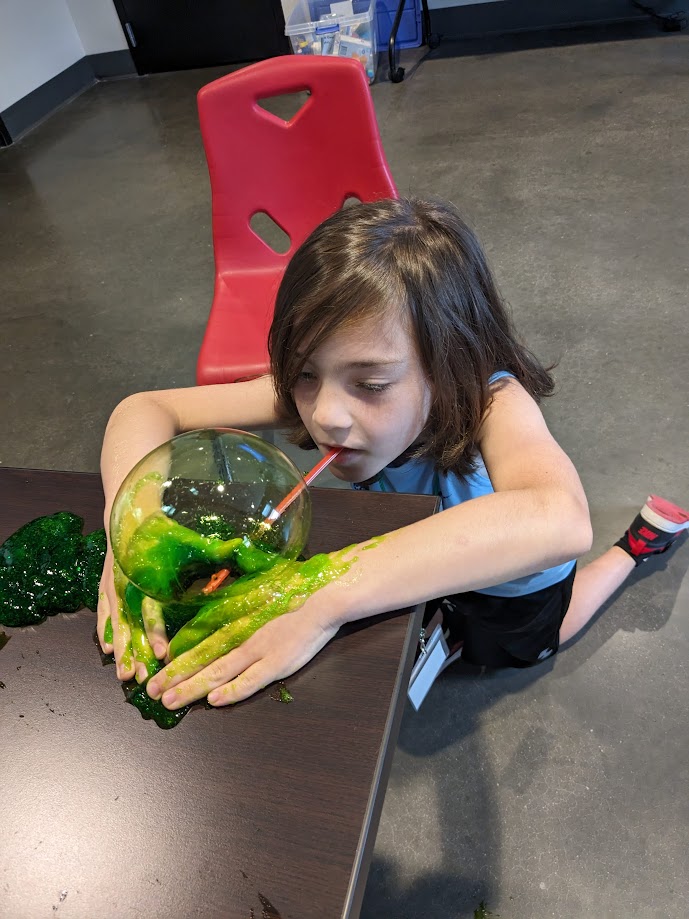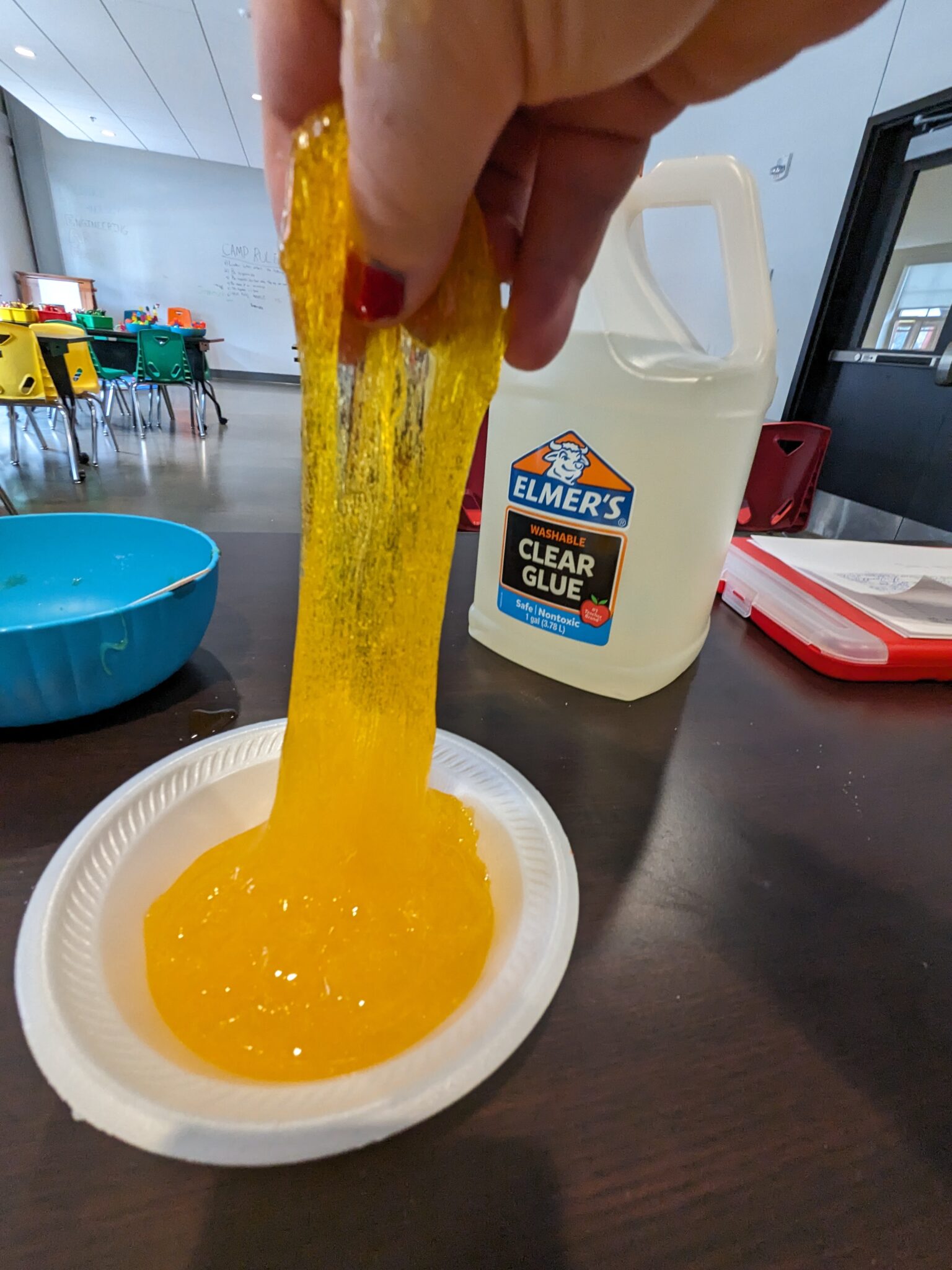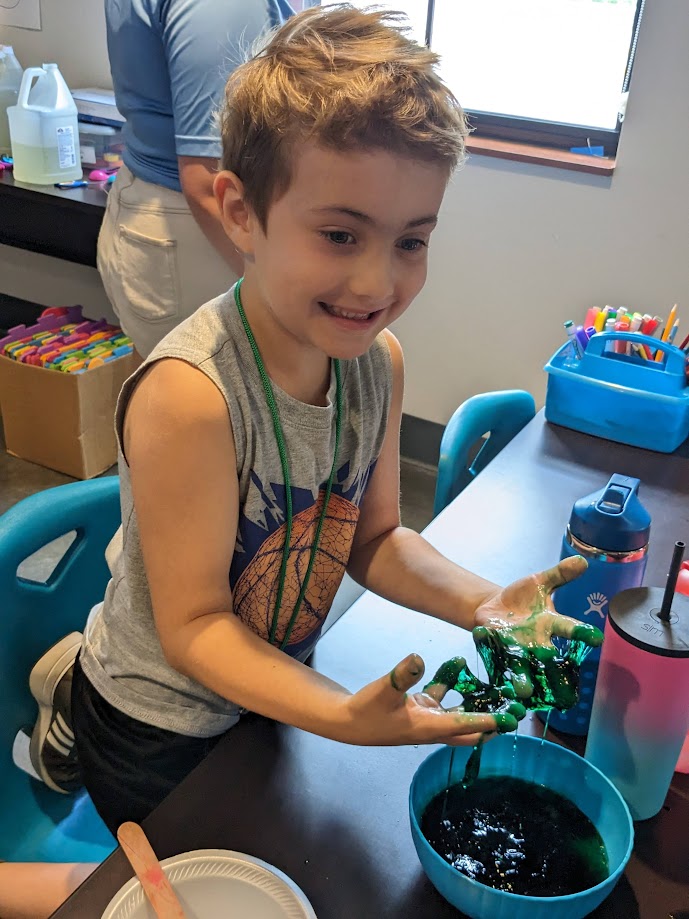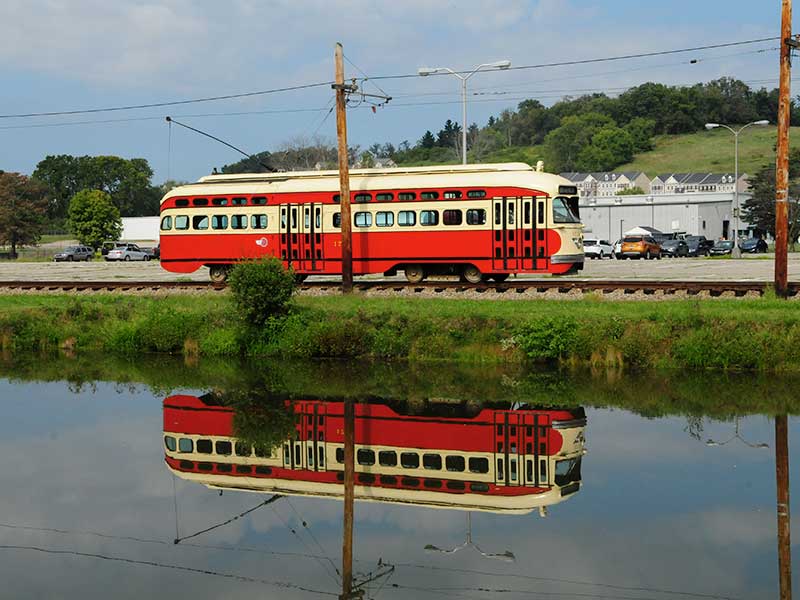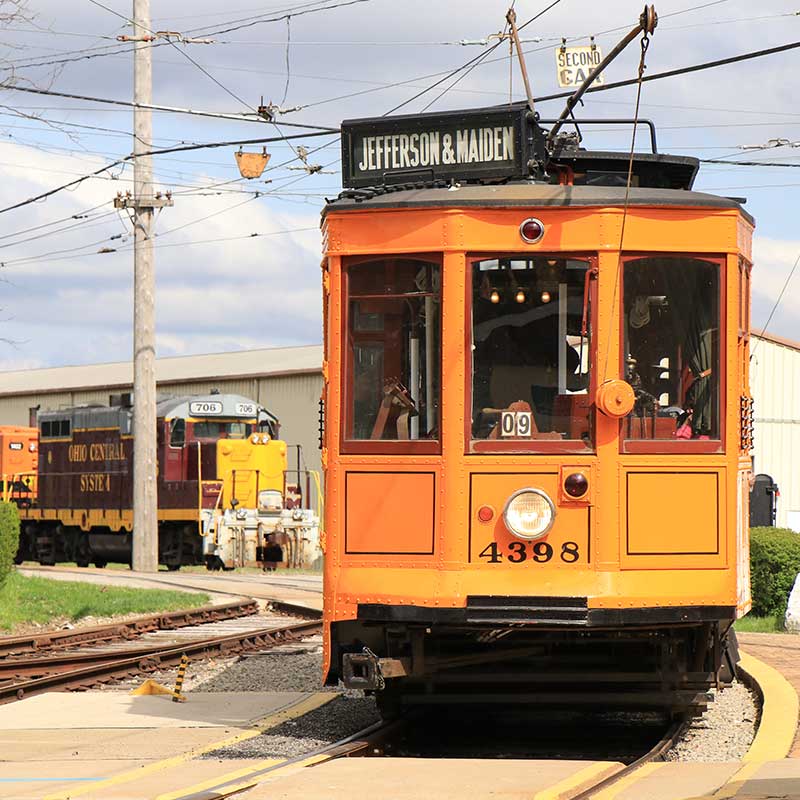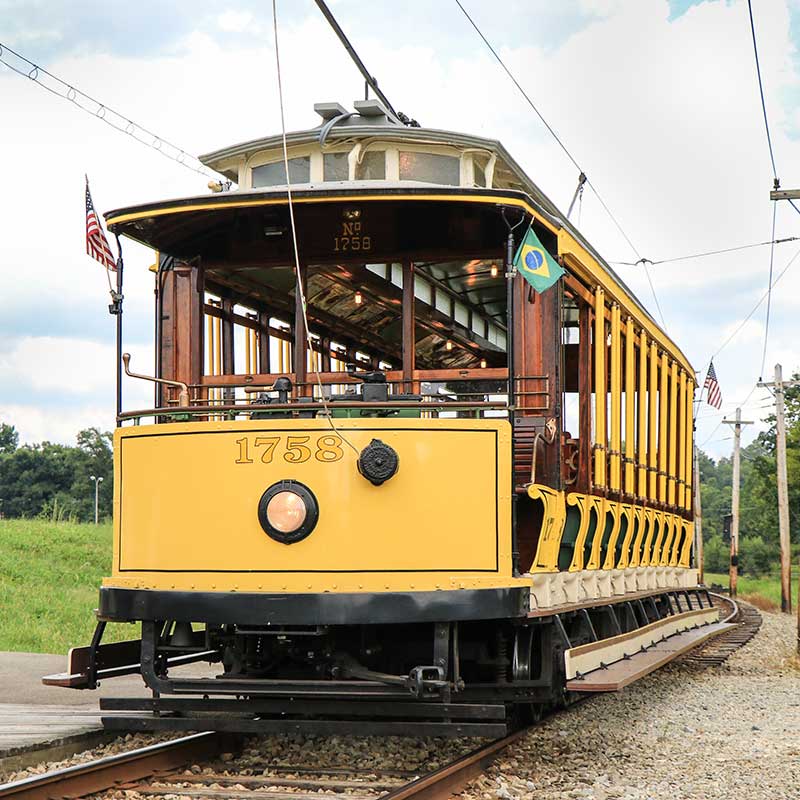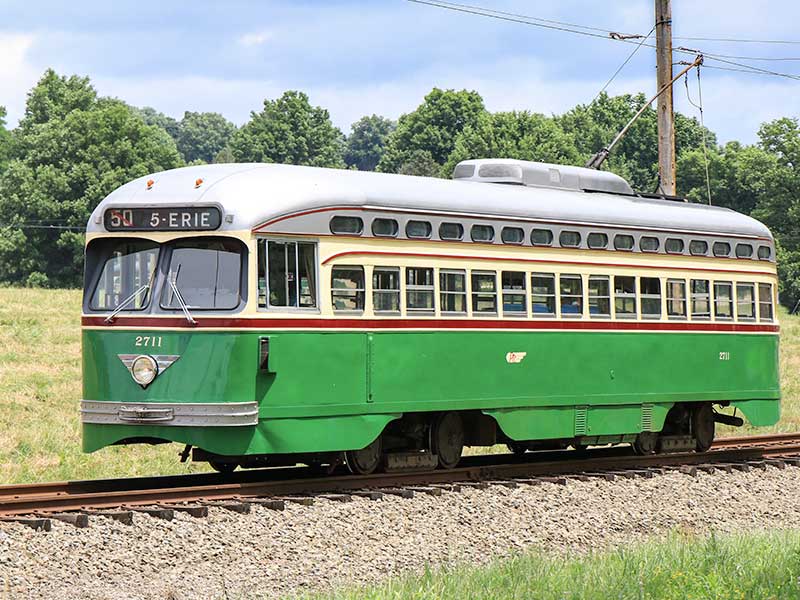It’s icky, it’s sticky – it’s slime! Read on below to learn how to make slime inspired by some of the colorful streetcars in the museum’s collection.
1711 Slime
Want to make some red slime? Get inspired by a car that ran between the Mon Valley and Washington area, just south of Pittsburgh, for many years. This car was built in 1949, making it about 75 years old. Like 2711, this car is also a PCC. It was one of the first trolley cars to be built with sealed windows. Instead of opening the windows for some fresh air, four large fans up in the top of the trolley would pull fresh air in from the outside while the car was running. This car is famous for being the last car to carry passengers on the last ride from Washington to Pittsburgh on August 30, 1953. Read more about the car here.
4398 Slime
This slime is inspired by the museum’s low-floor car. This was one of the first trolleys to be made with smaller motors, The smaller size meant that the stairs weren’t as steep and tall, which made it easier to get on and off of the streetcar. This car was built in 1917, making it well over 100 years old. It ran in Pittsburgh for many years. This car also has a long history behind it here at the museum. It was pulled off of the line to be fixed up in 1977, but there was so much work that needed to be done (and not a lot of interest and available skilled volunteers around to work on its restoration) that it took until 2011 for the car to be returned to service – over 30 years later. There are only two of these cars left in existence – both are here at PTM! Read more about the car here.
1758 Slime
This bright yellow slime is inspired by one of our most popular cars: the open car! This car is famous for many reasons, including because this car is not from the United States. This car is from Rio de Janeiro, Brazil – all the way from South America! It was built in 1911, making this car well over 100 years old! During hot months and before the invention of air conditioning, open cars were a very popular way to cool down. Today, it’s one of the most popular cars that runs during the hot summer months here at the museum. Read more about the car here.
2711 Slime
Want to make some green slime? Get inspired by the brightly colored 2711! This car is from Philadelphia and was built in 1947, making it about 75 years old. This trolley is a “PCC,” which stands for The President’s Conference Committee car. The easily recognizable color of this car comes from the color scheme of the Philadelphia Transportation Company, also known as PTC. Read more about the car here.
ACTIVITY TIME
Gather the following supplies to make a single batch of slime:
- 1 4 oz. bottle of School Glue, white or clear (1 small bottle)
- Food coloring
- 1 and ½ cups of water
- 2 bowls
- 1 tsp. Borax
- Popsicle Sticks
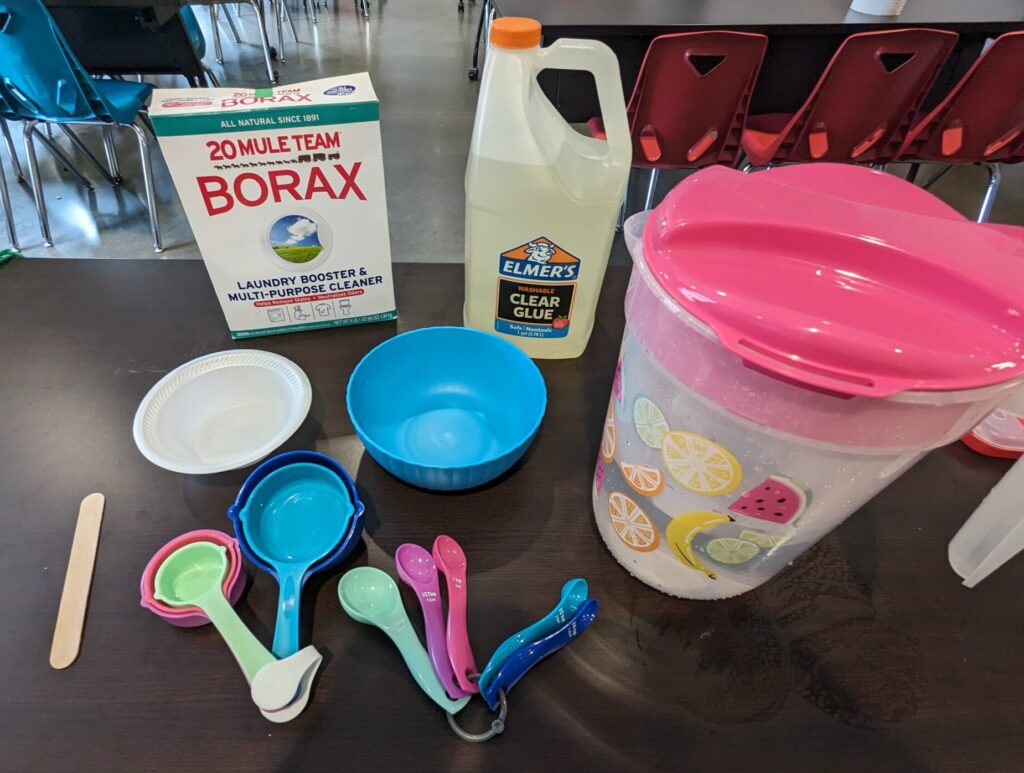
Step 1
Mix the Borax with 1 cup of warm water together.
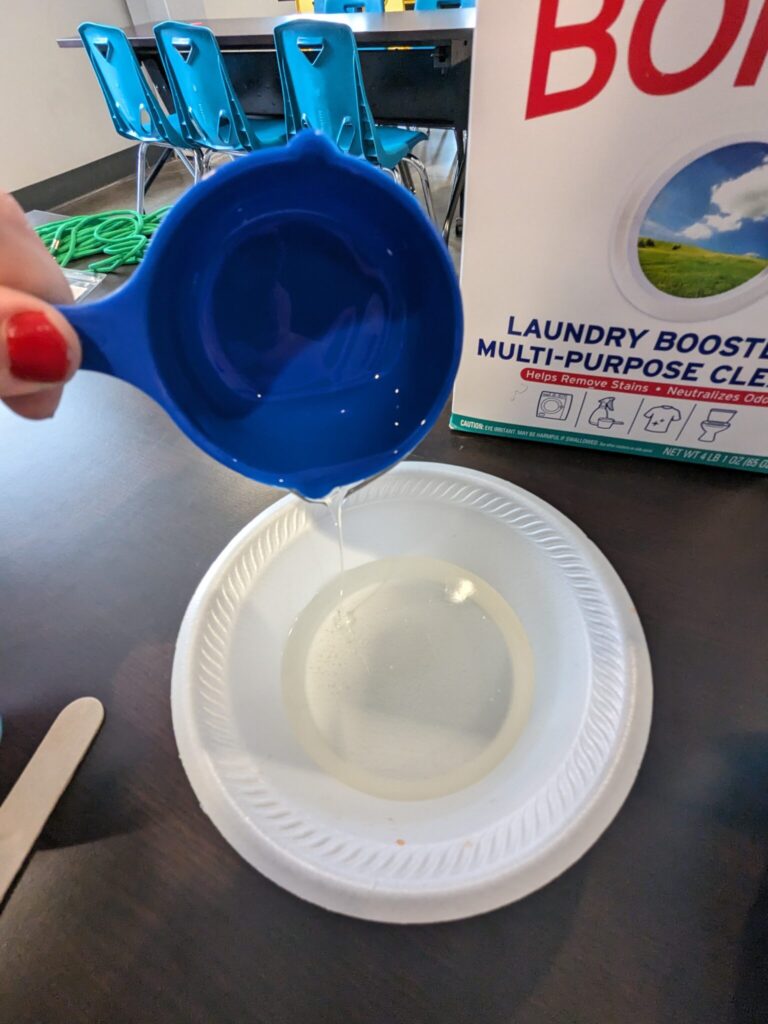
Step 2
Mix ½ cup of water and glue together in the mixing bowl. Add food coloring. Stir everything until combined. (Optional – Add glitter or other add-ins of your choice)
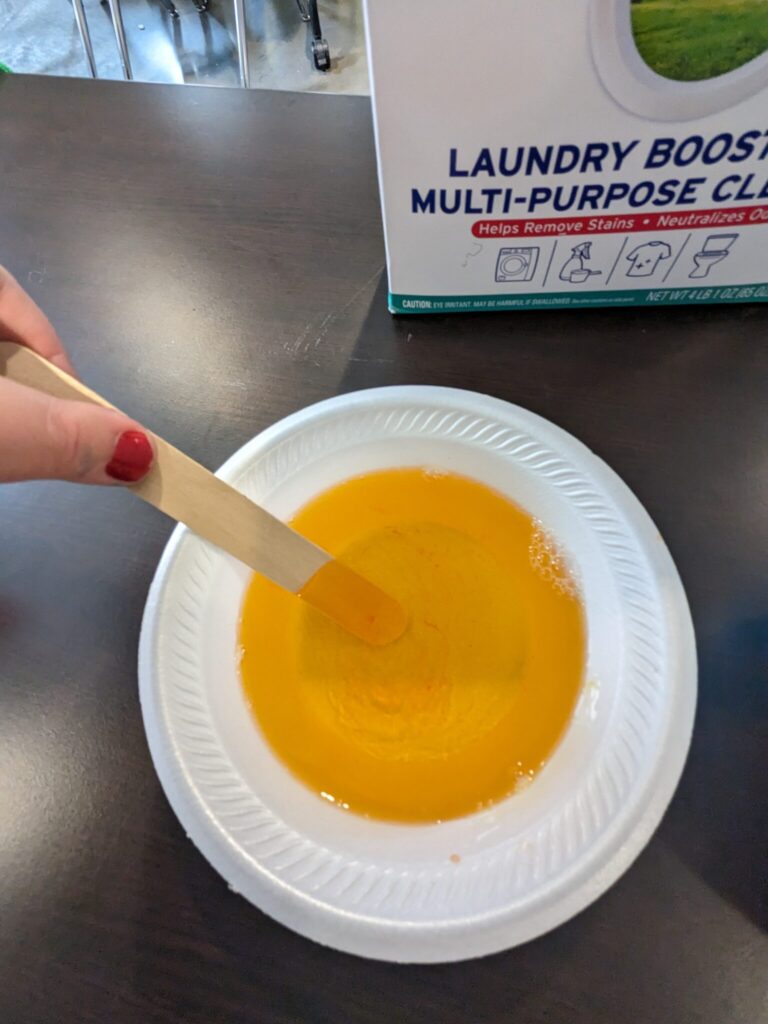
Step 3
Slowly add the borax mixture into the glue mixture. Start mixing everything together with the popsicle stick – stir and stir, then use your hands! Watch as the mixture starts clumping together into a solid shape.
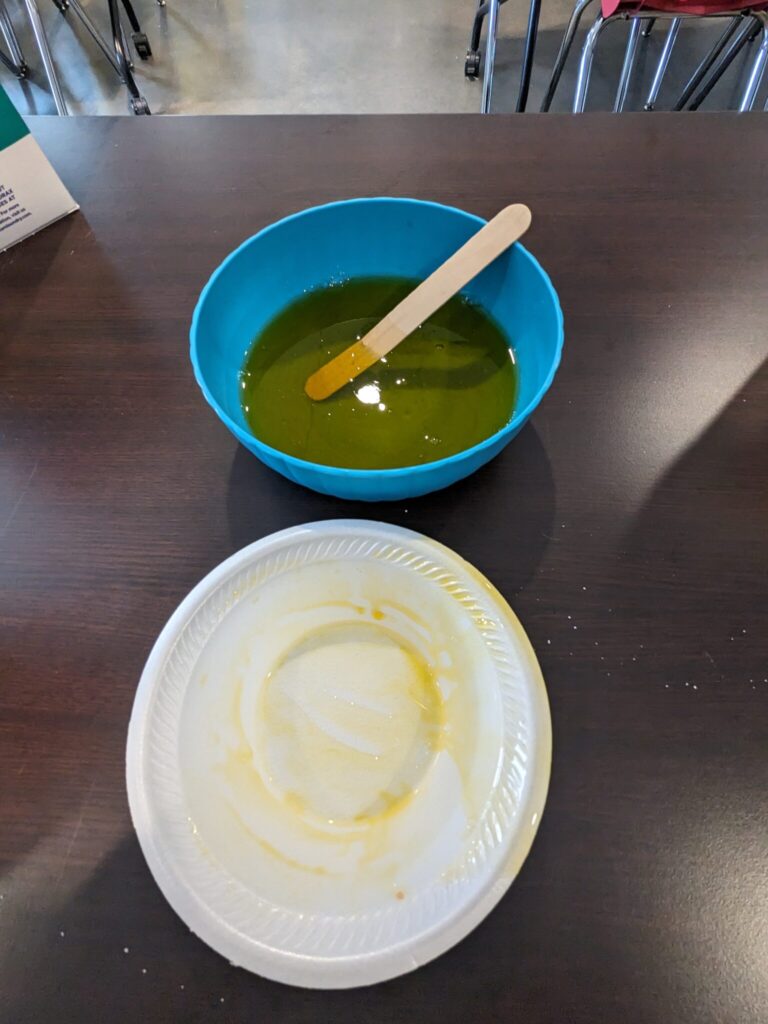
Step 4
Pull out the slime. Knead the slime together until it looses some of its stickiness.
Note: There will be some leftover liquid in the bowl after the slime is removed. Throw away any leftover liquid or slime pieces in the garbage (do not dump any slime residue down the sink, as it might cause a clog).
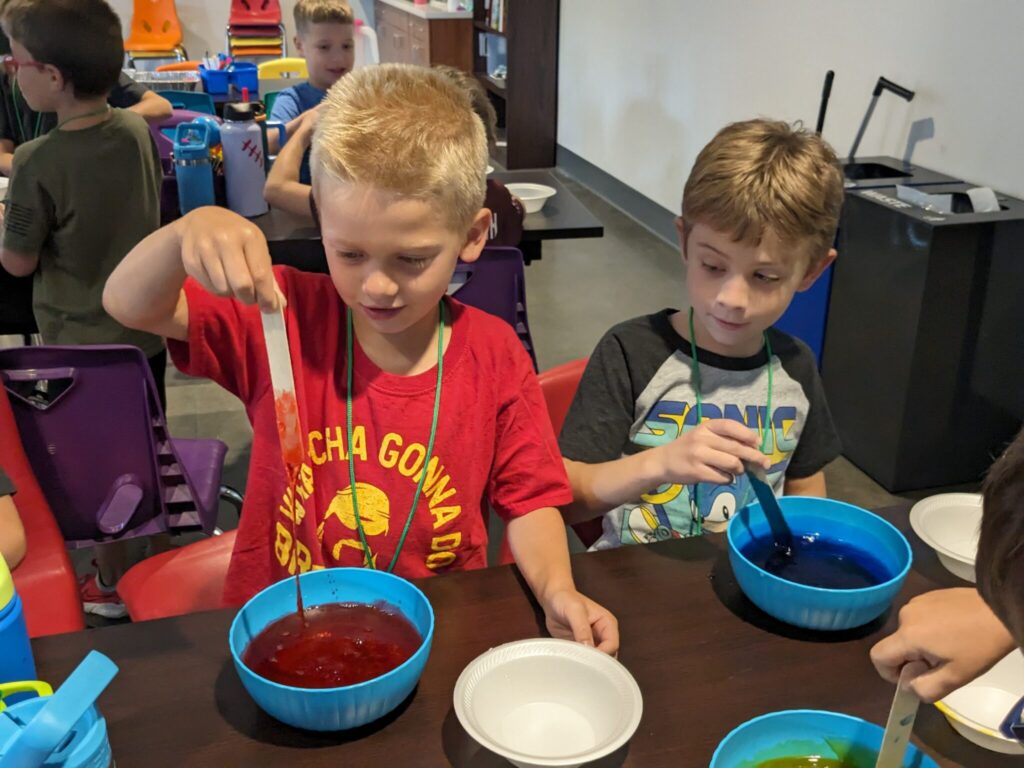
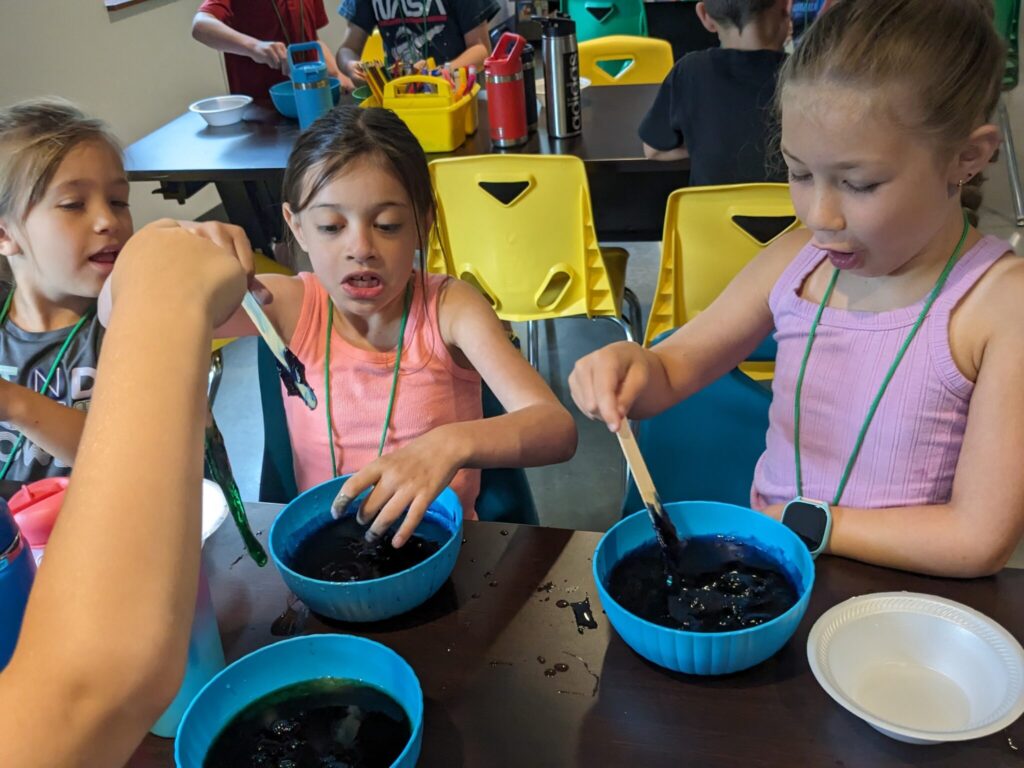
To Store Slime
Store slime in an airtight plastic or glass container with a lid at room temperature. It will stay good about one month before drying out.
What Happened?
- The mixture of Elmer’s Glue with Borax and water produces a putty-like material called a polymer. In simplest terms, a polymer is a long chain of molecules. You can use the example of cooking spaghetti to better understand why this polymer behaves in the way it does. When a pile of freshly cooked spaghetti comes out of the hot water and into the bowl, the strands flow like a liquid from the pan to the bowl. This is because the spaghetti strands are slippery and slide over one another.
- After a while, the water drains off of the pasta and the strands start to stick together. The spaghetti takes on a rubbery texture. Wait a little while longer for all of the water to evaporate and the pile of spaghetti turns into a solid mass — drop it on the floor and watch it bounce.
Is it a solid or a liquid?
- Everything in the universe is made up of small particles known as atoms.
- Solids hold their shape and do not move. Atoms in solids are packed very tightly together. The molecules that make up atoms clasp onto one another, much like a group of people all giving each other a big group hug or huddling up.
- Liquids take on the shape of whatever container they are in. Liquids flow, but they cannot be stretched or squeezed. The molecules that make up liquids can slip and slide around each other.
- Gasses have no defined shape. They move about freely.
- Does the slime we just made fit into any of those categories? Not exactly! Slime is a sneaky substance known as a Non-Newtonian Fluid. It’s not really a solid, but it’s not really a liquid, either! You can pick it up with your hands, like a solid, but if you try to hold it in yours hands it will just ooze and flow out of your hands like a liquid.
- Ketchup is another common non-Newtonian fluid. If you’ve ever read Bartholomew and the Oobleck and has made or played with Oobleck before, this is another popular example of a non-Newtonian fluid.
EXTENSION IDEAS
Want to keep the experiment going or use this activity as a science project? Here are some additional activity ideas!
-
- How long of a strand can be make before the slime breaks?
- The Bounce Test: Make a small ball shape out of some of your slime and drop from a specific height onto the table or floor. Does it bounce or go splat?
- The Weight Test: Use different small objects with varying weights to see if the objects remain on top of the slime or sink down into the slime. What do you observe? What happens if you remove the object? Does the slime hold its shape?
- The Bubble Test: Can slime bubble up? Use a drinking straw and attempt to create bubbles inside of the slime. (Tip: Spread the slime out into a thin layer, pushing the edges down firmly against the surface. Carefully slide the straw under the slime. Gently blow air through the straw.)
- What happens if you make a second batch of slime but change the amount of borax? What happens if you add less borax? More borax?
- Is there a difference between using white school glue and clear school glue?
